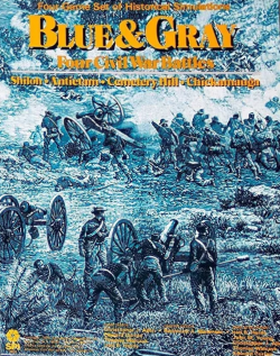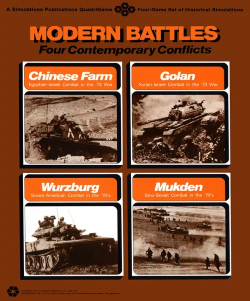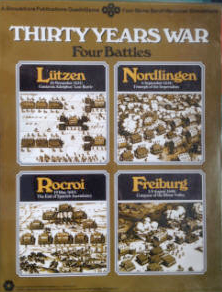Related Research Articles

Year 1191 (MCXCI) was a common year starting on Tuesday of the Julian calendar.

The Third Crusade (1189–1192) was an attempt led by three European monarchs of Western Christianity to reconquer the Holy Land following the capture of Jerusalem by the Ayyubid sultan Saladin in 1187. For this reason, the Third Crusade is also known as the Kings' Crusade.

Garnier de Nablus, also known as Garnier of Syria, was the tenth Grand Master of the Knights Hospitaller from 1190 to 1192, succeeding Armengol de Aspa. He fought at the Battle of Arsuf in 1191 during the Third Crusade. It was under his magistracy that the headquarters of the Order were transferred from Tyre to Acre. He was succeeded by Geoffroy de Donjon.

Napoleon's Last Battles is a board wargame published by Simulations Publications in 1976 that simulates the last four battles fought by Napoleon. It was one of SPI's most popular games, and also received many positive reviews.

Blue & Gray: Four American Civil War Battles is a board wargame originally published by Simulations Publications, Inc. (SPI) in 1975 that simulates four battles from the American Civil War.

The Siege of Jerusalem, 70 A.D. is a board wargame published by Historical Perspectives in 1976 that simulates the Roman attack on Jerusalem by Cestius Gallus. The game was subsequently bought by Avalon Hill, revised and republished in 1989.

The Art of Siege, subtitled "Four Great Siege Battles", is a collection of four board wargames published by Simulations Publications Inc. (SPI) in 1979 that simulates four famous sieges.

Frederick the Great, subtitled "The Campaigns of The Soldier King 1756-1759", is a board wargame published by Simulations Publications Inc. (SPI) in 1975 that simulates several of the campaigns of Frederick the Great in Central Europe during the Seven Years' War. When SPI ran into financial difficulties, they sold the rights to the game to Avalon Hill, who produced a second edition in 1982.

Modern Battles: Four Contemporary Conflicts is a collection of four board wargames published by Simulations Publications Inc. (SPI) in 1975 that simulates four modern-day battles set in the early 1970s.

Napoleon at War, subtitled "Four Battles", is a collection of four board wargames published by Simulations Publications Inc. (SPI) in 1975 that simulates various battles fought by Napoleon.

Bloody Ridge, subtitled "Turning Point on Guadalcanal, September 1942", is a board wargame published by Simulations Publications Inc. (SPI) in 1975 that simulates the Guadalcanal Campaign during World War II. The game was originally published as part of the Island War: Four Pacific Battles "quadrigame" — a gamebox containing four games simulating four separate battles that all use the same rules. Bloody Ridge was also published as an individual "folio game."

Thirty Years War, subtitled "Four Battles", is a "quadrigame" — four separate board wargames packaged in one box that use a common set of rules — published by Simulations Publications Inc. (SPI) in 1976. The four games simulate different battles during the Thirty Years' War, and were sold individually as well as in the quadrigame format. Some of the games were well received by critics, but overall, the quadrigame did not sell well.

Freiburg, subtitled "3–9 August 1644 – Conquest of the Rhine Valley", is a board wargame published by Simulations Publications Inc. (SPI) in 1976 that simulates the 1644 Battle of Freiburg during the Thirty Years' War. Freiburg was originally sold as one of four separate games packaged together in Thirty Years War, a "quadrigame", but it was also published as an individual game. It received poor reviews from critics, who called it the weakest of the four games in the Thirty Years War box, "a series of slogging matches", "not much fun", and "relatively boring."

Breitenfeld, subtitled "Triumph of the Swedish System", is a board wargame published by Simulations Publications Inc. (SPI) in 1976 that simulates the 1642 Battle of Breitenfeld during the Thirty Years' War. Breitenfeld was a free game that appeared in Strategy & Tactics, designed to promote SPI's soon-to-be-launched wargame Thirty Years War. Breitenfeld proved popular and was also published as part of SPI's "folio" series of games.

Westwall: Four Battles to Germany is a collection of four board wargames published by Simulations Publications (SPI) in 1976 that simulate battles in Europe in late 1944 and early 1945 during World War II.

Blue & Gray II, subtitled "Four American Civil War Battles", is a collection of four board wargames originally published by Simulations Publications, Inc. (SPI) in 1975 that each simulate a battle from the American Civil War. It is the sequel to Blue & Gray published earlier in the year. Each of the four games was also published as individual "folio games."

Hurtgen Forest, subtitled "Approach to the Roer, November 1944 ", is a board wargame published by Simulations Publications Inc. (SPI) in 1976 that simulates the Battle of Hürtgen Forest during the final year of World War II. The game was originally published by SPI as part of a four-game collection titled Westwall: Four Battles to Germany, but it was also released as an individual "folio game." While the quadrigame Westwall received good reviews from critics, the static nature of Hurtgen Forest was less well received.

Modern Battles II: Four Contemporary Conflicts is a collection of four board wargames published by Simulations Publications, Inc. (SPI) in 1977 that simulates three hypothetical contemporary battles as well as the battle for Jerusalem during the Six Day War in 1967. This collection was a sequel to SPI's popular Modern Battles published two years before.
Lille: The Classic Vauban Siege is a board wargame published by Simulations Publications, Inc. (SPI) in 1978 that simulates the Siege of Lille in 1708. The game was originally part of the four-game collection The Art of Siege, and was also released as a stand-alone "folio" game.
Tyre: Alexander's Siege and Assault is a board wargame published by Simulations Publications, Inc. (SPI) in 1978 that simulates the Siege of Tyre in 332 BCE. The game was originally part of the four-game collection The Art of Siege, and was also released as a stand-alone "folio" game.
References
- ↑ Hosler, John (2018). The Siege of Acre, 1189–1191: Saladin, Richard the Lionheart, and the Battle that Decided the Third Crusade. Yale University Press. ISBN 978-0300215502.
- 1 2 3 Freeman, Jon (1980). The Complete Book of Wargames. New York: Simon & Schuster. pp. 95–96.
- ↑ Olivier, Luc (April 2004). "The Art of Siege". Simulacrum. No. 20. pp. 11–15.
- ↑ Hamblin, William (March–April 1982). "Saladin at Acre". Phoenix . No. 36. pp. 17–20.
- ↑ Bartlam, Pete (December 1979). "The Art of Siege". Moves . No. 48. pp. 18–20.